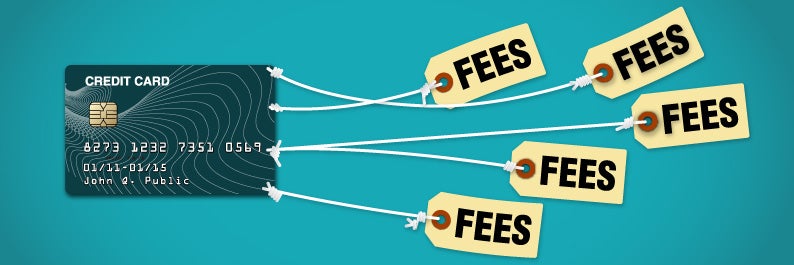Fees: Navigating Credit Card Fees
Every business these days, regardless of size, location, or sector, has a need to accept credit card payments. There are thousands of companies vying to offer ePayment services to all of them. A simple Google search for “accept credit cards” quickly returns more than 262 million results. With the sheer volume of results and options, how do you go about finding the right fit for your business?
A primary factor to consider is the credit card fee, so let’s look at how the card brands (Visa, MasterCard, Discover, and American Express) set pricing for their services. Their pricing schedules, known as “interchange,” are comprised of a percentage of the sale plus a fixed transaction fee (ex. 1.8% + $0.20).
Simple enough, but in addition to interchange, there are dues and assessments, network fees, cross border fees, location fees and many other small fees that influence credit card pricing. Monthly fees such as a statement fee, account maintenance fee, PCI compliance fee, gateway fee, and network access charge may also apply.
Now that we have a brief list of the types of credit card fees, let’s look at three primary ways that processing companies offer ePayment services:

- Tiered pricing: The processor offers a series of set, transaction pricing tiers. These are often labeled “Qualified,” “Mid Qualified” and “Non-Qualified”. Each has an accompanying pricing schedule, and the qualified rate is often a teaser, such as 1.39%. The challenge is that there is no uniformity in the industry as to how a transaction is qualified. This designation is left to each processor, making it impossible to realistically compare competing offers.
- Fixed pricing: As the name implies, this a single percentage plus per-transaction fee for all transactions processed. This is the pricing model employed by PayPal, Square, Stripe, and others. This approach provides simple pricing, but the tradeoff is much higher overall costs. This is especially true if the organization commonly accepts debit cards, which are the least expensive to process.
- Interchange Plus or Cost Plus: In this model, the business pays the true interchange (cost) plus a markup for the processor. For the vast majority of businesses, this model provides the lowest net cost. Since every processor incurs the same interchange fees, it is easy to compare offers.
While there are expenses in maintaining an account, most of these fees are simply additional profit for the processor. To simplify your understanding of all the fees, simply divide your total monthly charge by your sales and multiply the result by 100. This will yield your net merchant fees into a percentage ($3,000 in fees / $100,000 in sales * 100 = 3, meaning 3%) of average cost. Use this simple formula to project your monthly ePayment processing fees.
Take a sneak peek at our next blog article, “Payment Methods: What do consumers want?”, here.
Explore the Knowledge Center library here.

